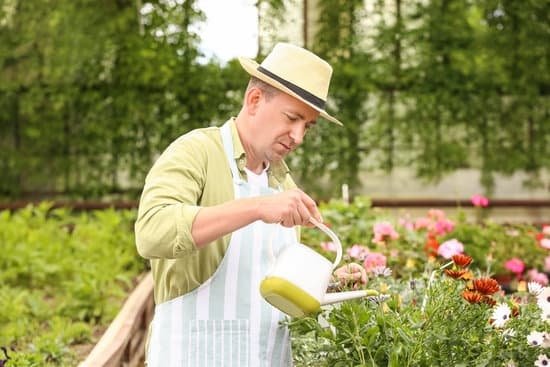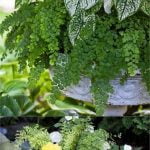Are you eager to start your own small backyard vegetable garden but not sure where to begin? If so, you’ve come to the right place.
In this article, we will explore the many benefits of small backyard vegetable gardening and provide valuable tips and ideas for making the most of limited space. Whether you’re an urban dweller or simply working with a small outdoor area, these small backyard vegetable gardening ideas will help you create a thriving garden right at home.
Small backyard vegetable gardening is an ideal option for urban dwellers who may have limited outdoor space. By growing your own vegetables at home, you can enjoy the convenience of having fresh produce right at your fingertips. Additionally, small-scale gardening allows you to take greater control over the quality and variety of vegetables you grow, leading to a more sustainable and environmentally friendly lifestyle.
One of the greatest advantages of growing your own vegetables in a small backyard garden is the ability to cultivate organic and eco-friendly practices. With the right planning and preparation, even a modest outdoor area can yield a bountiful harvest of nutritious and delicious vegetables.
So let’s delve into some practical advice for choosing the right vegetables, designing a functional garden layout, implementing sustainable practices, maintaining your garden, and even embarking on creative DIY projects to maximize space in your small backyard vegetable garden.
Choosing the Right Vegetables for Your Small Backyard Garden
When planning a small backyard vegetable garden, it’s important to select the right vegetables that are well-suited for small spaces. Some of the best vegetables for small backyard gardens include lettuce, spinach, radishes, and green onions, as they can be grown in small containers or raised beds. These compact plants are perfect for those with limited space and are also easy to care for.
In addition to choosing the right vegetables, consider varieties that thrive in containers or raised beds. Tomatoes, peppers, and herbs such as basil and parsley are excellent choices for container gardening as they don’t require a lot of space in the ground.
For those with limited ground space, vertical gardening is also a great option. Vining plants like cucumbers, beans, and peas can be trained to grow upward on trellises or supports, maximizing space while still yielding a bountiful harvest.
To help visualize how your small backyard vegetable garden will look, create a layout plan to maximize space and efficiency. Utilize online tools or graph paper to map out where each type of vegetable will be planted. Consider companion planting techniques where compatible plants are grown together to maximize space and ward off pests naturally.
| Small Vegetable | Ideal Growing Condition |
|---|---|
| Lettuce | Small containers or raised beds with good drainage |
| Tomatoes | Large containers or raised beds with ample sunlight |
| Cucumbers | Vertical gardening on trellises or supports |
Planning and Preparing Your Small Backyard Garden
When it comes to small backyard vegetable gardening ideas, planning and preparing your garden space is crucial to success. Designing a functional and aesthetically pleasing garden layout is essential for maximizing the limited space you have available. Consider utilizing raised beds or containers to make the most of your small yard. This not only saves space but also provides better control over soil quality and drainage.
In addition to garden layout, soil preparation is another key aspect of getting your small backyard vegetable garden ready for planting. Ensuring good drainage is important, especially in small spaces where water can quickly become an issue. Choose the right tools for small-scale gardening, such as compact hand trowels and lightweight hoes, to make the most of your space without feeling overwhelmed by larger, bulkier equipment.
Creating a visually appealing garden space requires thoughtful planning. When choosing the location for your small backyard vegetable garden, consider access to sunlight and water sources. These are essential elements for the success of your plants. With proper planning and preparation, even the smallest backyard can be transformed into a thriving vegetable garden oasis.
| Vegetable | Best Growing Conditions |
|---|---|
| Tomatoes | Full sun, well-drained soil |
| Lettuce | Partial sun/shade, consistent moisture |
| Cucumbers | Full sun, ample water supply |
Implementing Sustainable Practices in Your Small Backyard Vegetable Garden
Using Organic and Eco-Friendly Methods
One of the best ways to ensure sustainability in your small backyard vegetable garden is by using organic and eco-friendly methods. This includes avoiding the use of synthetic pesticides and fertilizers, opting for natural alternatives instead. You can make your own organic pest repellents using ingredients like neem oil, garlic spray, or companion planting to control pests naturally. Additionally, utilizing organic soil amendments such as compost and aged manure can improve soil health without any harsh chemicals.
Composting and Recycling in a Small Garden Setting
Composting is an excellent way to reduce waste and create nutrient-rich soil for your small backyard vegetable garden. You can compost kitchen scraps, yard waste, and other organic materials to create a natural fertilizer that will benefit your plants. In a small garden setting, consider using compact compost bins or vermicomposting (worm composting) to manage waste more efficiently. Furthermore, recycling materials such as glass jars or plastic containers for gardening purposes can also contribute to sustainability in your garden.
Water-Saving Techniques for Small Gardens
Water conservation is essential for sustainable gardening, especially in small spaces where resources may be limited. Implementing water-saving techniques such as installing drip irrigation systems or using soaker hoses can effectively deliver water directly to the roots of plants while minimizing evaporation.
Mulching around plants helps retain moisture in the soil and reduces the need for frequent watering. Additionally, collecting rainwater in barrels or utilizing greywater from household activities can further reduce water consumption in your small backyard vegetable garden.
Maintaining Your Small Backyard Vegetable Garden
Once you have successfully planned and planted your small backyard garden, the work doesn’t stop there. Maintenance is key to ensuring a bountiful harvest and a thriving garden throughout the growing season. In this section, we will explore some essential tips for maintaining your small backyard vegetable garden, including regular watering and feeding, managing pests and diseases, as well as pruning and harvesting for continuous yields.
Regular Watering and Feeding
In a small backyard vegetable garden, proper watering and feeding are crucial for the health and productivity of your plants. Make sure to water your garden regularly, especially during hot summer months. Consider investing in a drip irrigation system or soaker hoses to ensure that each plant receives adequate moisture. Additionally, feeding your plants with organic fertilizers or compost tea can help provide essential nutrients for healthy growth and abundant produce.
Managing Pests and Diseases
One challenge that small backyard gardeners often face is dealing with pests and diseases that can affect their vegetable plants. Utilizing natural pest control methods such as companion planting, beneficial insect attraction, and homemade organic sprays can help keep pests at bay without using harmful chemicals. It’s also important to inspect your plants regularly for any signs of disease and take prompt action to prevent their spread.
Pruning and Harvesting
Proper pruning of your vegetable plants not only helps to maintain a tidy appearance but also encourages healthy growth and higher yields. Remove any dead or diseased foliage, as well as overcrowded or unproductive branches. When it comes to harvesting, make sure to pick vegetables promptly when they reach maturity to encourage the continued production of new fruits. Regular harvesting also prevents overcrowding on the plant and allows space for new growth.
By following these maintenance tips for your small backyard vegetable garden, you can ensure that your garden remains healthy, productive, and visually appealing throughout the growing season. With careful attention to watering, feeding, pest control, pruning, and harvesting, you’ll be able to enjoy a fruitful harvest from your small space garden.
Creative Ideas for Small Backyard Garden DIY Projects
When it comes to small backyard vegetable gardening ideas, DIY projects can be a great way to maximize space and add a personal touch to your garden. Here are some creative ideas for DIY projects that will help you make the most of your small gardening area:
- Building space-saving trellises and supports: Vertical gardening is essential when working with limited space. Constructing trellises and supports for vining vegetables like tomatoes, cucumbers, and peas can help keep them off the ground and save valuable space.
- Creating custom planters and containers: Instead of traditional garden beds, consider building custom planters or containers that fit specific areas of your backyard. This allows you to have more control over soil quality and water drainage while also adding aesthetic appeal to your garden.
- Incorporating decorative elements into your garden space: Adding decorative elements like colorful stakes, painted rocks, or unique signage can bring personality to your small vegetable garden. These DIY projects not only provide visual interest but can also serve practical purposes such as deterring pests or marking plant varieties.
By incorporating these DIY projects into your small backyard vegetable garden, you can make the most of the available space while expressing your creativity and individuality. These projects are also a fantastic way to involve family members or friends in the gardening process and create a sense of ownership over the garden space. With some creativity and resourcefulness, even the smallest backyard can be transformed into a productive and visually appealing vegetable garden.
In addition to these DIY projects, it’s essential to ensure that any construction or materials used in your small backyard vegetable garden are safe and non-toxic. Consider using eco-friendly materials and practices when planning and implementing these projects, aligning with sustainable principles for small-scale gardening. With some ingenuity and careful planning, even the tiniest backyard can become a thriving oasis of homegrown produce through creative DIY endeavors.
Maximizing Limited Space in Your Small Backyard Vegetable Garden
When it comes to small backyard vegetable gardening ideas, maximizing limited space is a key consideration for urban gardeners. One popular technique for optimizing space in a small garden is square foot gardening. This method involves dividing the garden into small square sections, typically 1 foot by 1 foot, and planting different vegetables in each section. This allows for efficient use of space and makes it easier to manage the garden.
In addition to square foot gardening, companion planting is another strategy for making the most of a small backyard vegetable garden. This involves planting different types of vegetables together that benefit each other in some way, such as repelling pests or enhancing growth. For example, planting carrots with onions can help deter carrot flies, while pairing tomatoes with basil can improve the flavor of the tomatoes.
Another technique for maximizing limited space in a small backyard vegetable garden is succession planting and crop rotation. Succession planting involves sowing new seeds or planting new seedlings as soon as one crop is finished, ensuring a continuous harvest throughout the growing season. Crop rotation involves changing the location of crops from year to year to prevent soil depletion and reduce pest and disease problems.
By implementing these strategies, urban gardeners can make the most of their small backyard spaces and enjoy bountiful harvests of fresh, homegrown produce throughout the year. Whether you have just a few containers on a balcony or a small raised bed in your backyard, there are plenty of creative ways to grow an abundance of vegetables in limited space.
Showcasing Small Backyard Vegetable Garden Success Stories
When it comes to small backyard vegetable gardening ideas, success stories can serve as a great source of inspiration and motivation. Urban dwellers with limited outdoor space often wonder if it’s truly possible to grow their own fresh produce at home.
Fortunately, there are many successful examples of thriving small backyard vegetable gardens that prove it can be done. These success stories not only demonstrate the feasibility of small-scale gardening but also showcase the creativity and dedication of those who have embraced this rewarding hobby.
Here are some real-life examples of thriving small backyard vegetable gardens:
- The Smith Family Garden: Despite having a compact backyard, the Smith family has managed to create a flourishing vegetable garden. With the use of raised beds and vertical gardening techniques, they have maximized their space and grown an impressive variety of vegetables.
- Apartment Balcony Bounty: Even apartment dwellers can get in on the joys of homegrown produce. Sarah, a city resident with just a balcony to work with, has successfully cultivated tomatoes, peppers, and herbs in containers. Her creative use of limited space serves as an inspiration for others in similar situations.
- Community Garden Parcels: In densely populated urban areas, community gardens provide opportunities for residents to garden collectively. Many success stories come from individuals who have transformed their small allocated plot into vibrant vegetable havens.
These examples illustrate that with careful planning and creativity, small backyard vegetable gardens can yield impressive results. By highlighting these success stories, we hope to encourage and inspire others who may be considering embarking on their own small-scale gardening journey. Whether you have a postage-stamp sized yard or just a balcony or patio, there are ways to make your green thumb dreams a reality.
Conclusion and Next Steps for Your Small Backyard Vegetable Garden
In conclusion, small backyard vegetable gardening offers a multitude of benefits for urban dwellers, including the opportunity to grow fresh and organic produce at home. The satisfaction of harvesting your own vegetables, the ability to control what goes into your food, and the positive impact on the environment are just a few reasons why small backyard gardening is a great choice.
By choosing the right vegetables for small spaces, planning and maintaining your garden effectively, implementing sustainable practices, and incorporating creative DIY projects, you can transform even the smallest outdoor area into a thriving vegetable garden.
As you embark on your small backyard vegetable gardening journey, remember to utilize all available resources and support. Whether it’s joining a local gardening group or seeking advice from experienced small scale gardeners, there is plenty of knowledge to tap into. Additionally, websites and social media platforms dedicated to small backyard gardening can provide inspiration, tips, and guidance along the way. With dedication and creativity, anyone can turn their limited outdoor space into a fruitful vegetable garden.
So take that first step. Start exploring small backyard vegetable gardening ideas that best suit your space and lifestyle. Whether you’re growing herbs on a sunny balcony or creating raised beds in a small yard, there are countless possibilities for bringing fresh produce to your table.
And as you delve deeper into this rewarding endeavor, do not hesitate to share your successes and challenges with fellow gardeners – after all, community is an important part of any gardening experience. Cheers to harnessing the full potential of your small outdoor space through the wonders of homegrown produce.

Welcome to my gardening blog! I am passionate about plants and enjoy sharing my knowledge and experiences with others. In this blog, I will write about everything related to gardening, from tips on how to get started to updates on my own garden projects.





